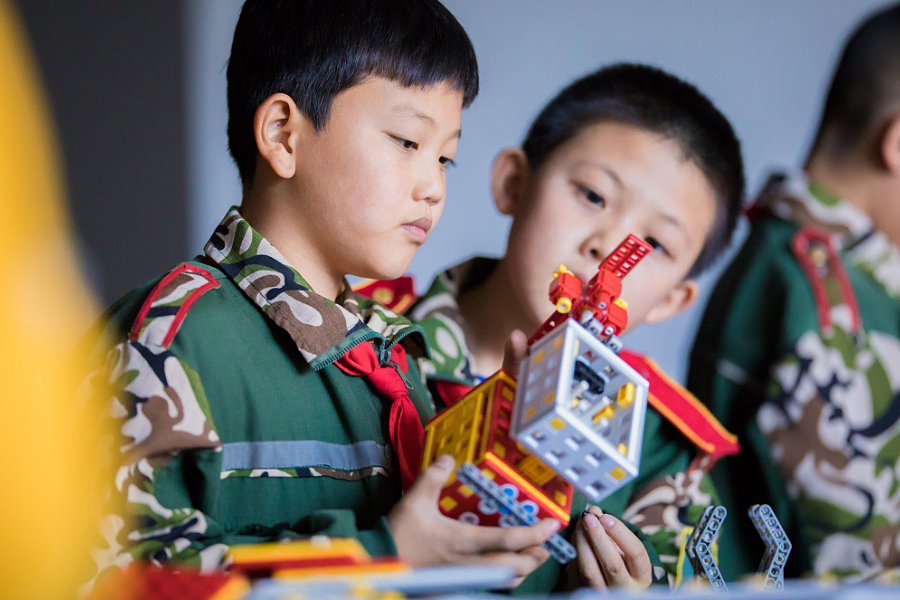iHuman moves through economic uncertainty in robotic holding pattern

The provider of educational products and services for children reported just 4.5% revenue growth in the second quarter, but its profit nearly doubled on reduced R&D spending
Key Takeaways:
- iHuman’s revenue grew by an unimpressive 4.5% in the second quarter, but it maintained its margins and reported strong profit growth on cost controls
- The education company’s deferred revenue declined for a second consecutive quarter from a peak at the end of last year
By Doug Young
China’s bloody education crackdown of two years ago destroyed an entire industry, including billions of dollars in market value, as much of the sector was wiped out of existence in just a few months. But now that the dust is finally settling, a new question is presenting itself, namely, is it possible for remaining survivors to actually thrive once again?
The latest earnings from iHuman Inc. (IH.US) don’t look too encouraging in that regard. The quarterly report shows a company whose business is effectively in a holding pattern, eking out single-digit revenue gains that might look good for a slow-growth sector like grocery stores but hardly looks exciting from a growth perspective.
iHuman managed to nearly double its profit for the quarter, which looks impressive at first glance. But a closer examination shows the profit growth actually slowed from triple-digit gains in previous quarters. What’s more, most of the latest gains came from cost savings as the company pulls back its R&D spending.
Such cuts might be good for profits in the present, but, again, are hardly the hallmarks of a growth-hungry company.
iHuman should at least be commended for simply surviving the crackdown of two years ago, which was mostly targeted at providers of after-school tutoring services for K-12 students in core curriculum areas at Chinese schools. The company managed to skirt the crackdown due to its focus on products and services focused more broadly on developing young children’s creativity and learning skills, rather than on specific school subjects.
But having survived that crackdown, the company hasn’t been able to excite investors with the kinds of high double- and even triple-digit revenue growth it reported before and just after its 2020 IPO. As a result, its shares have lost about three-quarters of their value from their IPO price. That may be better than many former educators that went bankrupt, but such anemic growth is hardly going to draw new investors to its stock.
One of iHuman’s more positive attributes is its profitability, as most of its peers are still losing money. By comparison, the company turned profitable last year and reported its sixth consecutive quarter of profitability in the latest reporting period. But its price-to-earnings (P/E) ratio currently stands at a lowly 7.
Its price-to-sales (P/S) is a bit more respectable at 1.2, as investors have rewarded the company for at least being profitable. By comparison the loss-making Youdao (DAO.US) trades at a P/S ratio of just 0.63; though Fenbi (2469.HK), which targets adult education, trades at a higher 3.3 after it also reported its first profit this year.
iHuman’s shares rose 5.5% in the two trading days after its results were published last Thursday. But then they gave all that back on Monday, which nicely summarizes the lack of excitement about this company, and perhaps more broadly about China’s education sector these days.
That’s unlikely to change anytime soon, as consumers rein in their spending due to all the economic uncertainty in China now. While Chinese parents are famous for spending lavishly on their children’s education, such spending is also one of the first things that’s relatively easy to curb in economically uncertain times.
Cautious company
iHuman also appears to be acting more cautiously these days, which perhaps is a commendable trait in the current economic climate. The company actually cut its overall operating costs by 7.6% in the second quarter to 130 million yuan ($17.8 million), led by a 19% cut in its R&D spending.
At the same time, its sales and marketing spending rose 21%, showing the company was still courting new customers for its existing products. As a result, iHuman managed to boost its average monthly active users (MAUs) by 11.7% year-on-year to 20.3 million during the second quarter – one of the few double-digit gains for its main performance metrics.
One other positive trend came in the company’s deferred revenue and advances, which has been dropping over the past two quarters after peaking at the end of last year. That figure stood at 303 million yuan at the end of 2021, but then rose sharply to 379 million yuan at the end of last year as consumers struggled to pay their bills during China’s tough Covid restrictions.
But the figure began to drop this year, and was back down to 326 million yuan by the end of June. While China’s scrapping of its “zero Covid” policy is probably the main driver behind the improvement, iHuman should also receive some credit for becoming more cautious in the current slowing economic environment.
But caution, while commendable in economically uncertain times, is hardly anything to get excited about. That lack of excitement was manifest in iHuman’s top-line revenue, which rose just 4.5% in the second quarter to 241 million yuan from 231 million yuan in the year-ago period. That slight rise, together with the cost controls, helped the company maintain its gross margin at a relatively strong 70.9%, roughly flat from the 70.8% a year earlier. And as we’ve previously noted, the company’s profit rose 93% to 42.1 million.
One other slightly positive element in iHuman’s report was its cash, which rose slightly to 1.1 billion yuan at the end of June from 1.05 billion yuan at the end of last year. While that might not look too exciting, any increase in the current environment shows the company won’t be facing a cash crunch anytime soon.
We’ll close by returning to the question we posed at the start, namely, will iHuman and other private education companies ever be able to return to their headier growth of an earlier era? Truth be told, Chinese have always placed a huge emphasis on education, and thousands of years of that tradition is hardly likely to change now.
That means the market could still hold big potential in the future. But first China will have to make it through its current economic slowdown and return to more stable growth. And there’s always the potential for future crackdowns, which will remain a major risk factor in China for the foreseeable future.
Have a great investment idea but don’t know how to spread the word? We can help! Contact us for more details.
The Bamboo Works offers a wide-ranging mix of coverage on U.S.- and Hong Kong-listed Chinese companies, including some sponsored content. For additional queries, including questions on individual articles, please contact us by clicking here.
To subscribe to Bamboo Works free weekly newsletter, click here






